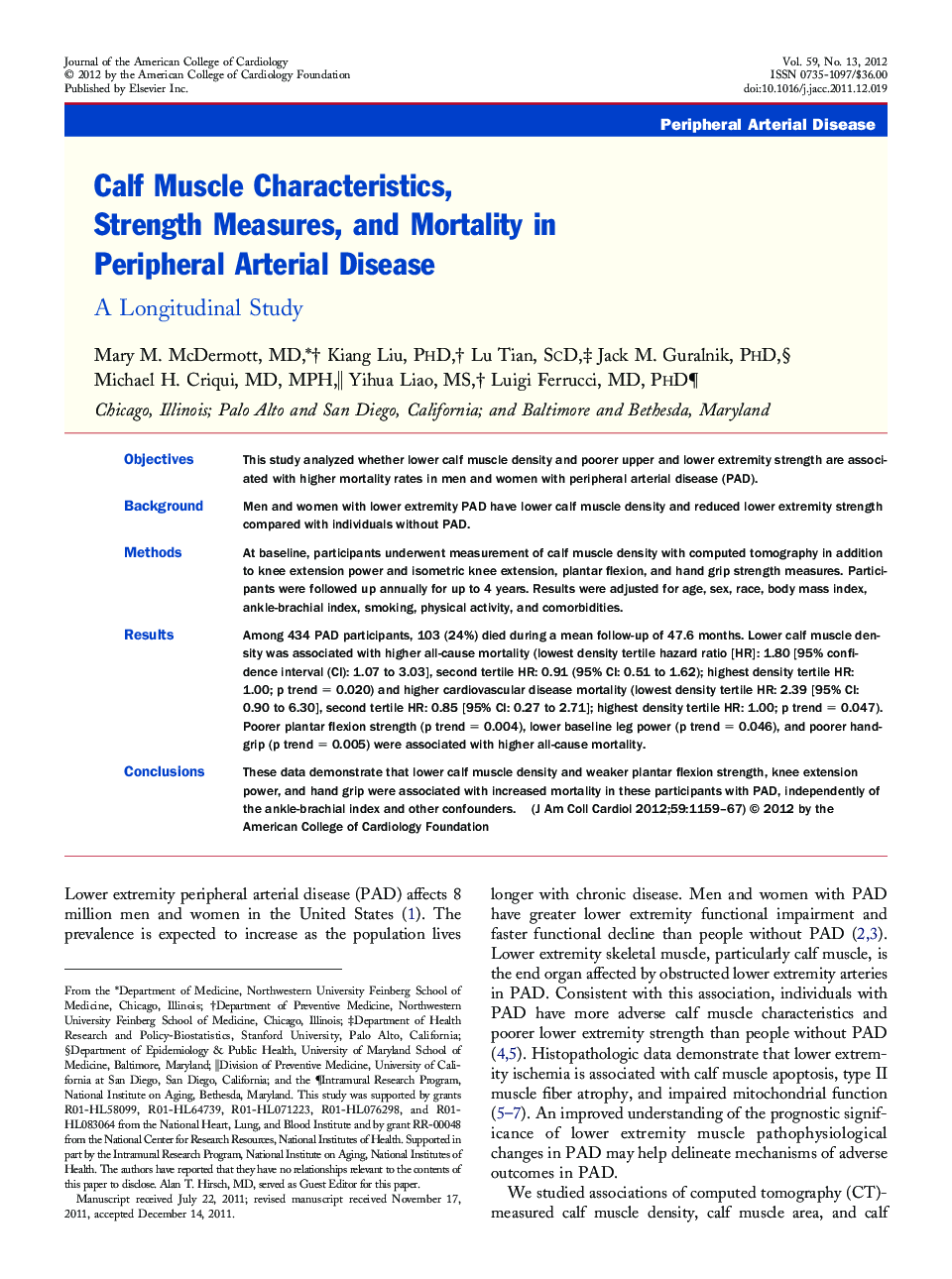| Article ID | Journal | Published Year | Pages | File Type |
|---|---|---|---|---|
| 2947219 | Journal of the American College of Cardiology | 2012 | 9 Pages |
ObjectivesThis study analyzed whether lower calf muscle density and poorer upper and lower extremity strength are associated with higher mortality rates in men and women with peripheral arterial disease (PAD).BackgroundMen and women with lower extremity PAD have lower calf muscle density and reduced lower extremity strength compared with individuals without PAD.MethodsAt baseline, participants underwent measurement of calf muscle density with computed tomography in addition to knee extension power and isometric knee extension, plantar flexion, and hand grip strength measures. Participants were followed up annually for up to 4 years. Results were adjusted for age, sex, race, body mass index, ankle-brachial index, smoking, physical activity, and comorbidities.ResultsAmong 434 PAD participants, 103 (24%) died during a mean follow-up of 47.6 months. Lower calf muscle density was associated with higher all-cause mortality (lowest density tertile hazard ratio [HR]: 1.80 [95% confidence interval (CI): 1.07 to 3.03], second tertile HR: 0.91 (95% CI: 0.51 to 1.62); highest density tertile HR: 1.00; p trend = 0.020) and higher cardiovascular disease mortality (lowest density tertile HR: 2.39 [95% CI: 0.90 to 6.30], second tertile HR: 0.85 [95% CI: 0.27 to 2.71]; highest density tertile HR: 1.00; p trend = 0.047). Poorer plantar flexion strength (p trend = 0.004), lower baseline leg power (p trend = 0.046), and poorer handgrip (p trend = 0.005) were associated with higher all-cause mortality.ConclusionsThese data demonstrate that lower calf muscle density and weaker plantar flexion strength, knee extension power, and hand grip were associated with increased mortality in these participants with PAD, independently of the ankle-brachial index and other confounders.
